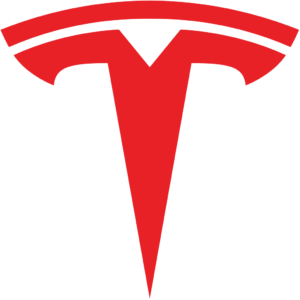Tesla pricing versus Big 3’s ….. $2.8B VW dividend ….. Audi e-tron sales ….. Lordstown Motors’ wheel hub motors
**** When it comes to pricing, Tesla continues to provide a sharp contrast versus other US and global automakers. Just in this year alone Tesla has cut the price of its Model 3 by $2,000, the Model X by $5,000, and the Model S twice from $79,990 to $69,420. While Tesla continues to lower its prices on its products, the world’s automakers continue to increase their vehicle prices on an annual basis! Furthermore, while Tesla is lowering its vehicle prices it continues to improve its products with running engineering changes and over-the-air (OTA) software upgrades. Result: greater value, less depreciation, and lower cost for the consumer. What’s not to love about that?
Elon Musk’s goal is to increase Tesla’s vehicles’ value while making them more affordable as a way to ensure a more sustainable future for our world. Other global automakers are driven by their need to make huge profits for their shareholders, while they continue to ignore the realities of the coming disruption at their expense in transportation and energy.
The November 7, 2020 Austin American-Statesman carried a Detroit News article from November 2, 2020 that among other things listed the average current transaction prices of sold vehicles from GM, Ford, and FCA (US market). These are not sticker prices but indirectly reflect the vehicles’ MSRPs. These are the final negotiated prices buyers pay a dealership for the vehicle. The percentage increases are interesting, but the new total transaction prices after the percentage increase from last year are even more informative. Compared to Q3 prices in 2019, GM’s average transaction price was up 4.3% to $43,445, Ford’s up 8% (yikes!) to $45,599, and FCA’s (Dodge, RAM, and Jeep) were up 5.6% to $42,895. Ford’s higher price likely is the result of the influence of heavily options-loaded F-150 pickups that annually outsell both GM and RAM pickups by over two to one.
Bear in mind the old finance “rule of 72’s”. A 4% increase a year means the price will roughly double in 18 years. At 8% a year, it takes only about 9 years to double. This can’t go on forever. Obviously, US auto producers are quickly pricing themselves out of the market. Not only do consumers have to pay these increasingly high purchase prices (and sales taxes), but they have to pay ICE powered operating costs that are some four to five times those of Tesla’s electric vehicles.
**** In an earlier article, I pointed out the heavy debt load of the major global automakers, particularly Volkswagen Group with a debt load of about $192 Billion at the start of this year. VW is simultaneously strapped for money but spending money like a drunken sailor to try to establish an electric vehicles beachhead and compete with Tesla. Yet, on this recent October 29th, VW announced that it would be paying a 2.4 Billion Euro (~$2.8B) dividend payment to its shareholders, who, if you remember from my recent articles, include the German government! One might think they would suspend paying dividends and GM and Ford both have, and invest the money in R&D, new electric vehicle and ICE product rationalization and design, and more new modern production plants.
Staying with VW Group for a while, Audi e-tron sales in Europe are doing well, while here in the US, they are a tough sell. Alex Voigt in a recent tweet pointed out that whatever the e-tron’s sales, they are low and being distorted by huge discounts. Alex reports a tweet from “I like Teslas” where “ILT” reported a conversation with a new e-tron owner at a supercharger station. The owner bragged: “Got a great deal, paid $50K for a car worth $80K (MSRP) because they can’t sell them.”
Maybe they don’t sell because the new Audi e-tron Sportback, for instance, falls at the very bottom of Matt Joyce’s “core efficiency” rating at 8.0 kWh/Range/Weight – Teslas are in the low fives. Or to use a more familiar figure, the Sportback gets 2.15 miles of range per kWh, while an average of Tesla’s Long Range Models S, X, Y, and 3s get 4.2 miles per kWh with today’s 2170 and 18650 batteries. Particularly with regard to Tesla’s Model 3 and Ys, why pay $20,000 to $30,000 more for an Audi with drastically less efficiency? Incidentally, Tesla’s numbers will significantly improve when its new 4680 batteries are in full production and incorporated into its line of vehicle models.
**** In an earlier article we reported in Ford’s battery problems with its Kuga plug in hybrid electric vehicle model in Europe. Some were catching fire. As a result, Ford had told its Electric Kuga customers to not charge their vehicles’ batteries anymore – to only use their cars in ICE-mode. Well, now word is out that the Kuga’s battery problem was caused by battery cell contamination from “our supplier’s” production process. “Our supplier” is Samsung, and the problem was in Samsung’s plant in Goed, Hungary that makes the Kuga EV batteries.
As a result, in addition to delaying the release of its US counterpart – the Escape plug in hybrid EV into 2021, Ford has told its roughly 21,000 Kuga customers in Europe that it will replace their vehicles’ batteries by the end of March 2021. (I’d be amazed if this happens by then.) This replacement will cost Ford a reported $500 to $600 million and forced Ford to pool its CO2 output with Volvo cars in order to avoid pollution fines from the European Union.
As critical for Ford, given its already limited supply of EV batteries, for every replacement battery they make for the already sold Kuga’s, that’s one additional new unsold Kuga or Escape vehicle they cannot produce and sell. Ford and its traditional auto competitors are learning that making electric vehicles is not easy. They could and should have learned this a decade ago. Meanwhile Tesla sprints ahead.
**** If you have been following electric pickup startups you know about Lordstown Motors’ forthcoming Endurance pickup truck, initially intended for commercial fleet use. Unlike other offerings such as Rivian’s R1T, GM’s Hummer, Bollinger’s B2, and Chevy’s, Ford’s and RAM’s electric pickup trucks, the Endurance pickup features wheel hub motors at each wheel rather than a centrally mounted motor(s) that drives the wheels through conventional axles. Several manufacturers have looked at this novel feature over the years but have always stopped short of using wheel hub motors due to problems with high unsprung weight, high cost, cooling, and protecting the motors from water, ice, and dirt/mud.
Certainly, wheel hub motors have some useful features such as maneuverability (no differential needed). It is also possible that two or four small motors in each wheel could be developed that would be cheaper than a conventional EV motor/drive configuration whether 2WD or 4WD. Wheel hub motors could save weight over a conventional ICE powered 4WD pickup with its transfer case, transmission, driveshaft, and differentials. Getting rid of the conventional drive units would also free up more design space for passengers and/or storage, or for larger batteries located more ideally.
In any case, Lordstown has chosen to differentiate its otherwise seemingly ordinary pickup truck with these wheel hub motors, developed and produced by Elaphe Propulsion Technologies in Slovenia. Elaphe’s wheel hub drive motors are liquid cooled. In my view this is risky, especially when the hub motor has to also handle heat generated by the vehicle’s disc brakes. In addition, not only does Lordstown have to keep road elements from any weather condition out, but they have to keep their liquid coolant in!
Whether Lordstown and Elaphe can make these wheel hub motors work in commercial use in US weather – especially the extreme cold of the northern US and the extreme heat of the southern US (AZ, NM, TX) remains to be seen. I remain a Lordstown Motors sceptic.
IF wheel hub motors were properly designed and manufactured, they hold considerable promise for electric vehicle developers. I am willing to bet that Elon Musk has at least considered their use for Teslas and perhaps already evaluated Elaphe’s wheel hub motors. In the short term, I suspect Musk was unwilling to take the risk of these new drive units, particularly on Tesla’s current range of relatively heavy cars. However, wheel hub motors designed and produced by Tesla for a smaller lighter vehicle such as Tesla’s forthcoming “Model 2” to be produced in China and Germany might be just the ticket! Stay tuned!
Image courtesy of Pixabay
Your feedback in the form of comments or suggestions are welcome in the comment window. Thank you for following my blogs on this site and for participating in my blogging community.




